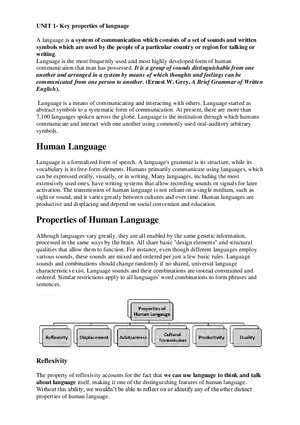Lecture Note
Lecture 1: What is linguistics?
-
University:
McGill University -
Course:
LING 201 | Introduction to Linguistics Academic year:
2024
-
Views:
251
Pages:
1
Author:
Allenna T.
Related Documents
- Lecture Note 3: Grammar
- Is Racism Growing In Our Society?
- Decoding Headline Cases and the Public Spectacle of Justice
- Chapter 5: Grammar Note
- Chapter 4: Grammar Note
- Chapter 3: Grammar Note
- Chapter 2: Grammar Note
- Chapter 1: Grammar Note
- Lecture 2: Phonetics (Consonants)
- Girl: With An African American Twist Seminar Paper
- Personal Narrative Example essay for CSN
- Lecture Note 1: Grammar
- Sentence Correction Practice
- Contrasting Messages: 'Man in the Mirror' vs. 'Young, Wild and Free'
- Essay: Black Panther (Clothing and Culture)
- Wolf's Lesson: Gratitude and Regret
- Lecture Note 2: Grammar
- Lecture Note 4: Grammar
Lecture 1: What is linguistics?

New Documents from this Course
Report
Tell us what’s wrong with it:
Thanks, got it!
We will moderate it soon!
Report
Tell us what’s wrong with it:
Free up your schedule!
Our EduBirdie Experts Are Here for You 24/7! Just fill out a form and let us know how we can assist you.
Take 5 seconds to unlock
Enter your email below and get instant access to your document
